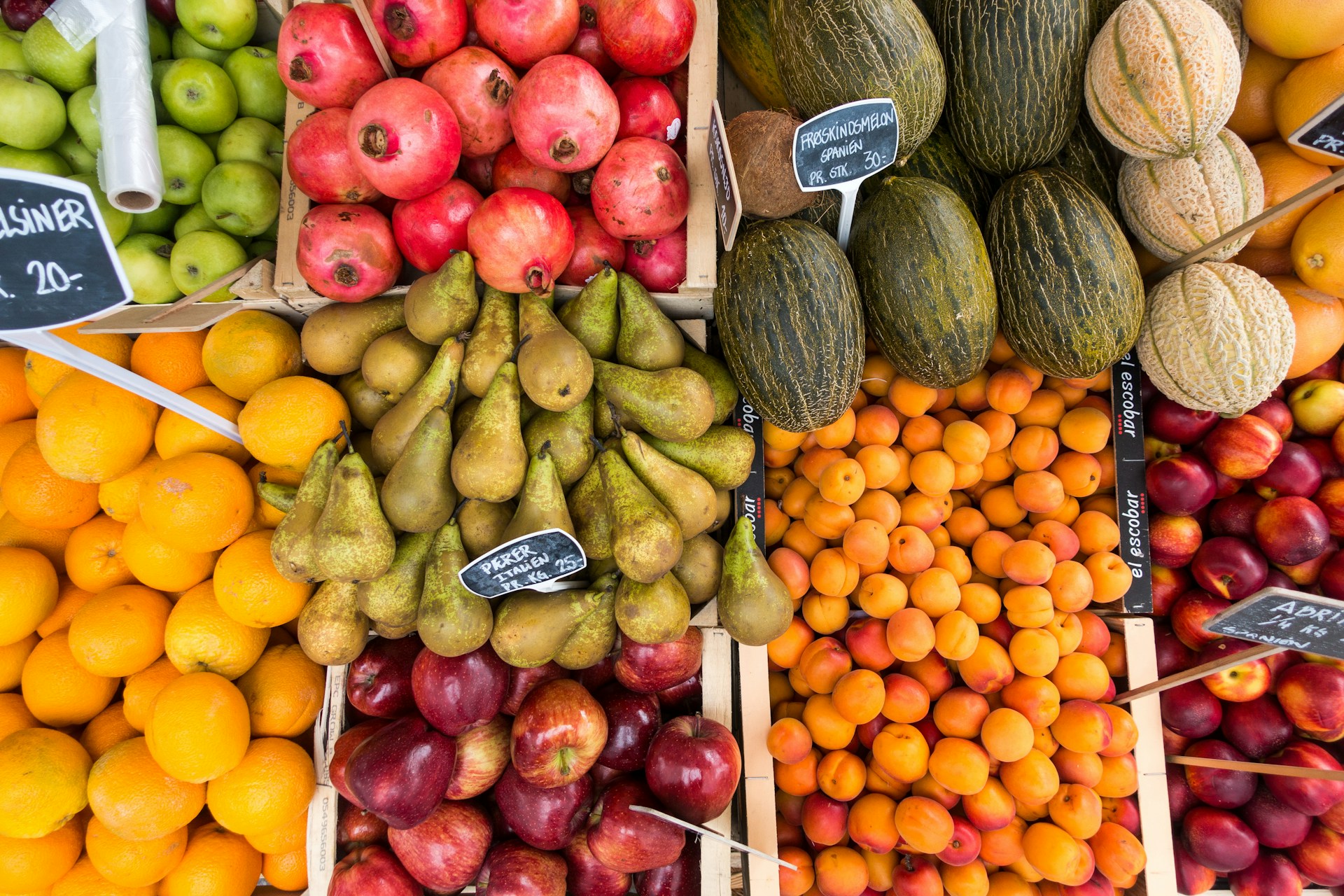In the dynamic world of international trade, maintaining compliance with diverse set of regulations ships a serious cargo of complexities.
For entities involved in the distribution of produce across borders, understanding and reliably navigating these legal landscapes is of paramount importance.
Managing such dilemmas is no small feat, given the myriad of food safety standards, plant health protocols, and import-export requirements involved.
Mitigating these risks requires comprehensive and adaptable strategies.
This article encompasses such tactics drawn from experts experienced in this field.
It aims to provide you with practical guidelines, to enhance your understanding and approach to cross-border regulatory compliance.
Contents
- Cross-border Compliance Strategies For Produce Distribution
- 1. Utilize internationally recognized compliance software
- 2. Build strategic relationships with local authorities
- 3. Conduct Regular Audits and Inspections
- 4. Implement Electronic Tracking and Tracing Systems
- 5. Obtain Necessary Cross-Border Permits
- 6. Schedule Regular Compliance Training Sessions
- 7. Acquire comprehensive knowledge of import/export regulations
- 8. Accurately Label and Package Products
- 9. Follow Sustainability and Fair-Trade Practices
- 10. Ensure complete documentation for every shipment
- The Bottom Line
Cross-border Compliance Strategies For Produce Distribution
1. Utilize internationally recognized compliance software
When it comes to cross-border compliance in produce distribution, one cannot underestimate the importance of utilizing internationally recognized compliance software.
This software significantly simplifies compliance procedures by automating several processes and effectively keeping track of all the necessary data.
Many of them come equipped with features that can handle multi-country and multi-currency transactions, making them ideal for cross-border trade.
Moreover, internationally recognized compliance software is often designed with a deep understanding of international trade laws and is continually updated to comply with the ever-changing regulations.
By using such software, companies not only ensure their operations are legally sound, but they also save significant time, effort and resources that would have been otherwise spent on manual compliance management.
Their capacity for real-time and accurate data on the movement of goods can significantly aid in decision-making, accountability, and governance within the organization.
These software systems can also integrate with other company systems, creating a centralized, streamlined and efficient compliance management system.
Most importantly, the use of compliance software can greatly reduce the risk of non-compliance and subsequent penalties, a critical aspect in cross-border produce distribution where regulations can vary greatly between countries.
They also come with features such as automated alerts for any potential regulatory breaches, adding an additional layer of protection against non-compliance.
Sector-specific customized compliance software are available, providing features and compliance measures directly applicable and highly relevant to the produce distribution industry.
These software systems not only cover international trade laws, but they also accommodate for country-specific laws and language variations, making them highly flexible for businesses operating in multiple territories.
Accessibility is another unique advantage of this type of software, as they are often cloud-based and can be accessed from anywhere, thus enabling easy compliance management for businesses with operations spread across different countries.
Furthermore, many of these software platforms provide training and support to their users, aiding in smoother implementation and efficient usage of the platform.
Overall, the use of compliance software crafted to handle international regulations is a strategic decision that can greatly ease the process of staying compliant while navigating the complex landscape of cross-border produce distribution.
Compliance is crucial in cross-border produce distribution, and it encompasses more than just understanding and following regulations.
Building strategic relationships with local authorities also plays a significant part in ensuring compliance.
These relationships provide a platform for dialogue and cooperation, which can reduce possible compliance issues.
Through strong relationships with local authorities, companies can gain valuable insights into local regulations and practices, thereby enhancing their compliance strategies.
Authorities in destination countries understand their respective customs regulations and procedures better than anyone else.
Engaging with them can ensure you are always up to date and can rapidly adjust to any changes in laws or requirements.
Moreover, building strong relationships with authorities can help expedite the customs clearance process and reduce the likelihood of costly delays or penalties.
Being on good terms with local authorities can also increase the chances of gaining valuable cross-border permits and other necessary approvals for importing or exporting produce.
However, remember that relationship-building takes time and regular positive engagement, so patience and consistency are essential.
Engaging with local authorities should be respectful and beneficial for both parties, offering information about your operations while demonstrating your commitment to full compliance.
Such relationships should also be built on transparency and trust and can extend beyond just regulatory compliance, encompassing areas like fair trade and sustainability as well.
Cross-border produce distribution companies that invest in relationship-building with local authorities often see a positive impact on their overall compliance strategies.
This approach allows them to become more proactive and resilient, better equipped to handle changes in policy or regulation, and more able to ensure ample, high-quality supply for their customers.
Building strategic relationships with local authorities is therefore a valuable investment for cross-border produce distribution companies who want to excel in compliance.
3. Conduct Regular Audits and Inspections
In the realm of cross-border compliance for produce distribution, conducting regular audits and inspections is crucial.
An audit is a detailed examination of your compliance standards, procedures, and results, performed by an internal or external auditor.
These comprehensive inspections can reveal potential compliance issues before they become larger, potentially costly problems.
Regular audits hold businesses accountable and ensure a proactive approach to compliance.
For example, they can uncover instances where import/export regulations are not being followed, allowing for timely correction.
Keep in mind that an audit is not a one-time event, but an ongoing process that contributes to continuous improvement in compliance.
Simultaneously, these audits and inspections also demonstrate to authorities that your business is committed to meeting and exceeding compliance standards.
It’s worth noting that the findings of an audit can be used as a basis to train employees, further improving compliance.
Importantly, audits can confirm that businesses are accurately labeling and packaging products, which is a key component of cross-border compliance.
Equally important are inspections, which involve a more routine, often visual, check of processes and products to ensure compliance.
Regular inspections can help to identify issues in real-time, further reducing the risk of compliance failings.
Inspections are typically more frequent than audits, providing a constant watchdog presence.
These inspections also help by enabling the constant flow of information, alerting management to any issues as soon as they arise.
Just like audits, inspections should be integrated as an ongoing and regular part of the compliance strategy.
It is essential that businesses have systems in place for both audits and inspections, as they each play their unique role in ensuring cross-border compliance for produce distribution.
4. Implement Electronic Tracking and Tracing Systems
Electronic tracking and tracing systems are pivotal in ensuring cross-border compliance for produce distribution.
These systems facilitate real-time monitoring of a product’s status and location from the time it is harvested until it reaches the final consumer.
Regular implementation of these systems not only promotes compliance, but it also improves overall efficiency and security in the supply chain.
This is particularly important in the food industry, where food safety regulations necessitate strict control over the movement and handling of products.
The use of electronic tracking and tracing systems aids regulators and businesses alike in quickly identifying and locating products in the event of a recall.
This can prevent further distribution of potentially hazardous products and enable faster responses to food safety incidents.
Moreover, these systems can provide valuable data for businesses to analyze and optimize their operations.
They allow companies to gain visibility into their supply chains, identify bottlenecks, and implement strategies to improve efficiency and reduce costs.
For instance, a business can track how long it takes for products to cross various checkpoints and use this information to devise proactive strategies to speed up the process.
Furthermore, implementing electronic tracking and tracing systems can demonstrate to authorities and customers that the company is taking all necessary steps to comply with regulations and guarantee the safety and quality of its products.
In this regard, it can also serve as a tool for promoting brand reputation and gaining consumers’ trust.
Considering the complex nature of cross-border produce distribution, businesses are encouraged to utilize comprehensive tracking and tracing systems that integrate with other business systems, such as inventory management and sales platforms.
With a fully integrated system, businesses can achieve seamless data flow across different areas of their operations, thereby improving overall operational efficiency.
However, successful implementation of these systems requires solid understanding of both the technical aspects and the regulatory requirements related to produce distribution.
Businesses should therefore invest in training their staff and partnering with experienced software providers to ensure they can properly utilize the systems and make the most out of their benefits.
While it may require a significant initial investment, it is important to remember that implementing electronic tracking and tracing systems is a strategic move that can result in long-term benefits for any business involved in cross-border produce distribution.
5. Obtain Necessary Cross-Border Permits
In the realm of cross-border produce distribution, securing appropriate permissions is of paramount importance.
These permissions, most often referred to as cross-border permits, serve as a legal authorization that sanctions goods to get through national borders.
Without these permits, businesses expose themselves to risks such as rejection at the border, fines, or even legal actions.
Moreover, depending on the nature and destination of your shipment, additional permits may be required, encompassing phytosanitary certifications and quality inspection approvals.
The process of obtaining these permits can be complex, demanding a thorough understanding of both local and international regulations, as well as seamless communication with multiple governmental agencies.
Therefore, businesses are urged to be proactive in researching the specific requirements for their particular type of produce and destination.
You should start the process well ahead of the day of shipment, considering the application and processing times needed for cross-border permits.
In certain cases, leveraging the expertise of customs brokers or consultants could be beneficial in navigating this intricate process.
They can guide you through the maze of paperwork, ensuring everything is fully compliant with regulations and that no vital permits are overlooked.
Besides this, businesses should also stay abreast of any changes in trading agreements or regulations which could affect their permit requirements.
Being unprepared for regulatory changes could result in failure to acquire the necessary permits, leading to interruptions and delay in produce shipments.
Furthermore, companies must also be aware of the costs involved in securing these permits and factor them into their financial planning.
Keep in mind that the cost can vary significantly depending on the type of goods, volume, destination, and any additional certificates required.
Lastly, remember that adhering to the regulations and having all necessary permits in place is not only a legal obligation, but it is also a testament to your company’s commitment to respecting international trade norms and ethics.
In conclusion, obtaining the necessary cross-border permits should be considered as part of the broader strategy towards achieving cross-border compliance in produce distribution.
6. Schedule Regular Compliance Training Sessions
In the increasingly globalized market, cross-border compliance with produce distribution regulations is simply non-negotiable.
One key strategy in ensuring cross-border compliance is to schedule regular compliance training sessions.
These sessions should be an integral part of your compliance program, serving as a conduit for disseminating important regulatory information and updates.
Training sessions equip your team with the knowledge and skills needed to understand and comply with regulations, thereby mitigating risks and ensuring smooth cross-border transactions.
Customized training sessions that focus on specific roles within the organization and the unique challenges they encounter can be extremely beneficial.
Sessions can reinforce interpretations of regulations, teach new compliance methods, and ensure everyone in the company is on the same page.
The frequency, duration, and level of detail of training sessions can depend on many factors, including the nature of the produce being distributed, the specific compliance requirements of different regions, and any recent changes in cross-border compliance regulations.
A well-structured training program should also give employees the opportunities to ask questions and seek clarifications, thereby encouraging active participation and engagement.
Remember that for a compliance program to be effective, you’ll need buy-in from all levels of your organization. Employees are more likely to support something they understand.
Another important consideration during these training sessions is the use of real-world examples and case-studies.
These concrete examples can help illustrate the consequences of non-compliance, making the training more impactful and memorable.
Therefore, while scheduling these sessions, consider including reviews of past compliance issues, ongoing challenges, and potential future scenarios.
The primary goal of these training sessions is to create an environment that promotes ethical and compliant conduct at all levels of the organization.
Also, it’s imperative to assess effectiveness of these sessions time to time. Assessments can serve as important tools in gauging employees’ understanding of compliance issues and guiding future training plans.
Ensure that your compliance training is a dynamic and evolving process, adapting to the ever-changing landscape of cross-border compliance. Regular updates and revisions based on regulatory changes and feedback from employees can help keep your program relevant and effective.
By scheduling regular compliance training sessions as part of your cross-border compliance strategy, you’re not only reinforcing the importance of regulatory adherence within your organization but also setting the stage for sustainable and profitable cross-border produce distribution.
7. Acquire comprehensive knowledge of import/export regulations
One of the most crucial aspects of ensuring cross-border compliance in produce distribution is to acquire comprehensive knowledge of import/export regulations.
Familiarizing with these regulations is indispensable to avoid legal problems and potential losses due to non-compliant operations.
Ranging from country-specific guidelines to the policies laid out by international regulatory bodies, these laws touch every aspect of import and export, and hence must not be overlooked.
International guidelines such as the Codex Alimentarius International Food Standards also play a significant role in the safe and fair trade of consumable goods across borders.
The scope of these import and export regulations extends to procedures of customs declarations, tariff classifications, valuation of goods, payment of duties and taxes, securing necessary permits, product packaging and labeling, and much more.
It’s important to invest time and resources to stay updated about these regulations as they are subject to change, and changes can lead to different compliance requirements.
World Customs Organization (WCO), for example, periodically updates its Harmonized System Nomenclature which is used for the classification of goods worldwide.
Noncompliance can lead to severe consequences such as fines, penalties, hold-ups at customs, or outright rejection of consignments, which can have a serious impact on business operations and reputation.
Understanding the importing country’s phytosanitary regulations, which relates to plant health, is key for the transportation of fresh produce across borders.
It is also imperative to understand the requirements for the Origin of Goods as it can impact duty rates and quotas, and can qualify for preferential treatment under various trade agreements.
Furthermore, the knowledge of import/export regulations equips businesses to effectively handle unpredictable situations such as trade restrictions imposed due to geopolitical tensions or health risks.
Consistent knowledge update can be ensured by attending industry seminars, webinars, and training sessions.
You can also subscribe to newsletters and alerts from customs and regulatory authorities, and engage with global trade professionals and consultants to keep yourself ahead of the curve.
Lastly, consult with legal experts on a regular basis to avoid any inadvertent non-compliance.
Thus, businesses should strive to stay compliant not only for the sake of legal obligation but also as a demonstration of their commitment to ethical and quality practices.
This in turn ensures their credibility, customers trust and sustainable growth in the international marketplace.
8. Accurately Label and Package Products
When it comes to the intricacies of cross-border produce distribution, correct labeling and packaging play a significant role.
Accurate labeling not only ensures regulatory compliance but also provides essential information to everyone in the supply chain, from customs officers to end consumers.
For instance, produce shipments should clearly indicate the type of product, country of origin, weight, and any other key information required by law.
The specific labeling requirements may vary depending upon the destination country or trade agreement, highlighting the importance of being familiar with various regional regulations.
Failure to adhere to labeling rules can lead to severe penalties, including product seizures, fines, and damage to reputation.
Similarly, appropriate packaging is essential to protect the quality and freshness of the produce during transportation.
This involves the use of suitable packaging materials and methods which can withstand various environmental conditions, prevent contamination, and maintain optimum temperatures for the produce.
It’s also essential to adhere to international packaging standards and ensure the materials used are eco-friendly and sustainably sourced.
Furthermore, packaging should not mislead consumers about the nature, quality, and quantity of the contents within it.
It’s also essential to include detailed documentation with each consignment, providing comprehensive information about the product, its origin, handling instructions, and other specifics.
Not only does this information assist with regulatory inspections, but it also boosts customer confidence and enhances traceability aspects.
A consistent approach to labeling and packaging, along with the use of modern technologies such as barcoding or RFID, can drastically improve the efficiency of cross-border produce distribution.
Similarly, working with packaging and labeling experts can ensure continued compliance in this crucial area.
Whether you’re a seasoned exporter or new to the business, understanding and applying the right labeling and packaging principles confidently can tremendously impact the success of your distribution efforts.
With increasing scrutiny by consumers and regulatory bodies alike, businesses simply can’t afford to overlook the importance of these elements in their cross-border compliance strategies.
9. Follow Sustainability and Fair-Trade Practices
In today’s increasingly environmentally conscious world, it is more critical than ever to follow sustainability and fair-trade practices in cross-border produce distribution.
Not only is it essential for the well-being of our planet, but it also resonates positively with consumers who are keen to support businesses that prioritize ethical and sustainable practices.
Fair-trade is a critical aspect of sustainable business practices that aims to ensure equitable trade conditions for producers in developing economies.
By committing to fair-trade practices, businesses can ensure that growers receive a reasonable wage and work in safe conditions, which in turn supports the development of these economies.
Embracing sustainable and fair-trade practices in produce distribution not only benefits the environment and workers, but it also offers significant business advantages.
For instance, sustainability and fair-trade practices can improve a company’s reputation and consumer trust, which translates into a competitive advantage in the market.
Organizations that implement fair-trade practices show their commitment to social responsibility, which can be a powerful tool for attracting socially-conscious consumers.
In addition, sustainability initiatives such as reducing waste, conserving water, and optimizing energy use can contribute to a company’s financial sustainability by reducing costs.
However, implementing sustainability and fair-trade practices in cross-border produce distribution can be challenging due to factors like enforcing standards across borders and addressing cultural and economic differences.
Despite the challenges, it is possible to implement these practices successfully with careful planning, commitment, and robust compliance strategies.
Businesses can start by assessing their current practices, identifying areas for improvement, and mapping out a strategy for incorporating sustainability and fair-trade principles into their operations.
Regular audits and inspections can help to ensure compliance with these principles and identify areas where improvements can be made.
Investing in internationally-recognized compliance software can facilitate the implementation and monitoring of these practices, and make it easier to adhere to local and international regulations and standards.
In addition, organizations should consider collaborating with authoritative bodies and certified ethical trade auditors to ensure credibility and compliance with sustainability and fair trade practices.
Furthermore, organizations can demonstrate their commitment to sustainability and fair-trade by transparently communicating their practices and achievements in these areas to customers, shareholders, and the broader public.
By doing so, they can boost their image, attract a larger customer base, and ultimately drive greater profits.
To summarise, embracing sustainability and fair-trade practices in the distribution of produce across borders can bring significant benefits, from improved brand reputation to efficient operations, while also contributing positively to global economic equity and environmental protection.
10. Ensure complete documentation for every shipment
As part of comprehensive cross-border compliance strategies for produce distribution, it is critical to ensure complete documentation for every shipment.
Complete and accurate documentation serves as a legal record of the transaction, detailing the exact nature of the product and agreement between the parties involved.
Incorrect or incomplete paperwork can result in significant fines, delays at the customs, or even shipment rejections.
Every shipment requires several essential documents, such as the Bill of Lading, Commercial Invoice, and Packing List.
The Bill of Lading acts as a contract between the shipper and the carrier and provides details about the cargo and the terms of carriage.
A Commercial Invoice is a billing statement that provides information needed to assess tariffs, like the seller, buyer, terms of the sale, and description of the goods.
The Packing List describes the contents, weight, and dimensions of the cargo, which helps customs officers verify that the cargo matches the description provided in other documents.
Some countries require additional documents, like a Certificate of Origin detailing where the goods were produced.
It’s not just about what you ship but also about having the right paperwork that proves the shipment’s legitimacy and compliance with specific regulations.
Understanding and utilizing internationally recognized compliance software helps streamline documentation processes by ensuring the consistency of data across all documents.
This software can generate, store, and manage all necessary documents digitally, thus decreasing the possibility of human error.
It is also possible to track the entire documentation process in real time for improved transparency and accountability.
Furthermore, it is suggested to take advantage of shipping documentation services offered by freight forwarders or third-party logistics providers.
They have the expertise and understanding of any language, legal, or customs requirements for different countries.
Having current knowledge of export regulations is crucial in maintaining accurate documentation and avoiding potential legal issues.
Regular compliance training sessions can additionally equip the employees with the skills needed to handle these complex documentation processes efficiently.
An essential aspect of this process is to keep physical and digital copies of all documentation for future reference or in case of an audit.
In conclusion, maintaining thorough documentation for each shipment is a vital component of cross-border compliance strategies in produce distribution.
The Bottom Line
Adhering to cross-border compliance standards is vital for any business operating internationally.
This means leveraging recognized compliance software, forging meaningful connections with local authorities, and carrying out consistent audits and inspections.
The incorporation of progressive technological solutions such as electronic tracking systems also contributes significantly.
It is essential to secure the required cross-border permits, hold regular training sessions on compliance, and amass profound understanding of import/export regulations.
The importance of precise labelling, packaging, and documentation cannot be overstated.
Ultimately, honoring sustainable and fair-trade practices underpins successful cross-border operations, ensuring the protection of both the enterprise and its consumers.




